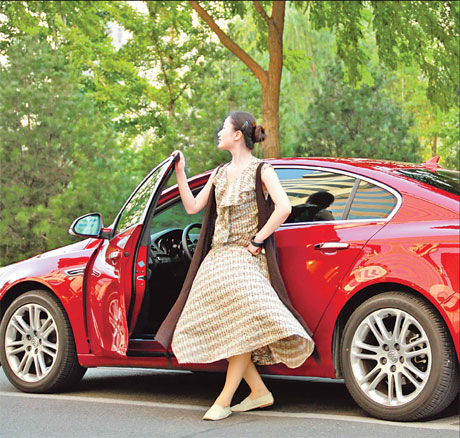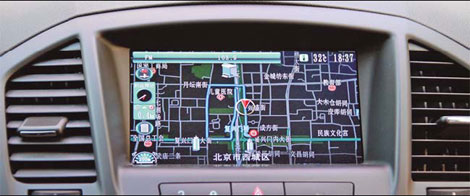Life and Leisure
Steering the market
By Cai Xiao (China Daily)
Updated: 2010-09-16 08:00
 |
Large Medium Small |
|
Like many of her female friends, 27-year-old lawyer Li Jiali has become a car owner. Photos by Huang Fangchao / for China Daily |
The growing number of women drivers is influencing the direction of the country's automobile industry. Cai Xiao reports
It has been a long day at work, but 27-year-old lawyer Li Jiali is about to meet a dear friend in the parking lot of north Beijing's Guohua Plaza - that is, her red Buick Regal. The woman's exhausted expression melts into a grin as she slides into the driver's seat. She fires up the engine, wraps the seatbelt around her, turns on the GPS tracker and shifts into gear.
"Having a car makes my life much more convenient. And it does the same for my husband, too. He seems quite pleased with having his own on-call chauffer when he's off work," Li says, laughing.
Li works at a law office, and her husband trades futures from home. They bought the car in November last year, when the flu was spreading in Beijing.
"For me, buying the car was answering the call of my girlfriends," Li says.
Women accounted for more than 40 percent of car owners in 2009 compared to 25 percent in 2003, says a survey by Sinotrust, a leading supplier of marketing and credit solutions.
Sinotrust's chief auto industry analyst Lang Xuehong says the main engine driving the growing number of women behind the wheel is that more families are purchasing second cars as their incomes rise.
"Most of the drivers of second cars in such increasingly prosperous families are women," Lang says.
IBM Corp consultant Wang Zhe is about to join their ranks.
Her husband, Shi Wei, used to pick her up from work. But he has become increasingly busy with his real estate job and the couple's 3-year-old daughter started kindergarten this year.
Wang, who is in her mid-30s, says that because the family's income has increased significantly, she can buy a second car to lighten her husband's burden by picking up her daughter.
The couple has agreed that Shi will let Wang choose whatever car she wishes and will only give some suggestions about the vehicle's performance.
Wang plans to select a make and model very different from her husband's Santana 3000.
She hopes to avoid the "old three" - a term referring to the trio of brands popular in the 1990s, when few Chinese drove: Santana, Jetta and Citroen. These automobiles are known for quality and reliability but few score them highly on style.
Wang, instead, plans to take fashion into account when selecting her new set of wheels.
While safety is paramount, she explains, looks matter, too. Wang is hoping to find a green or white model with an aesthetically appealing body shape.
She also hopes for a lot of interior space, so she wants to find a multiple-purpose vehicle (MPV), which would make it easier to take her child and parents out on weekends.
Another recent Sinotrust survey of 6,672 women car owners found that 27.8 percent wanted MPVs with seven or eight seats for their families.
Shi supports his wife's ambition to not only get her own car but also to find one of her liking.
Car manufacturers and marketers have taken note of the growing number of women behind the wheel and are steering their companies to meet their needs.
Volkswagen Group China's public relations vice-president Yang Meihong says the company is working to develop designs that are "considerate to women's tastes".
"For instance, women seem to have particular preferences for coloration, so we are developing more colors to satisfy them."
Philip Wang, a 30-year-old legal advisor who works for a State-owned enterprise, has owned a traditional black Magotan model for years but says he believes, "it's interesting that women have brought more colors to the street". And, he says, he hopes to see more in the future.
Lang says many automobile designers believe the proliferation of women drivers will benefit their male counterparts in ways many haven't yet thought of.
"GPS trackers were originally developed for women, who seem to have a poorer sense of direction," Lang says.
"But men find it useful, too, especially when navigating unfamiliar places. The same goes for parking management systems, automatic control and seat adjustment."
Cosmetic mirrors, for instance, were first installed in the 1975 Volkswagen Beetles' sun visors to enable women to do their makeup in the car and have since become common automobile features.
Wang's husband, Shi, says he often has to change clothes in the car, so he finds the cosmetic mirror useful.
Shi says he agrees with the words of American women's consumption expert Marti Barletta: "If you meet the expectations of women, you exceed the expectations of men."
|
GPS trackers and bright car colors appeal to women. |

